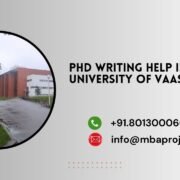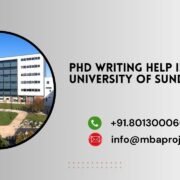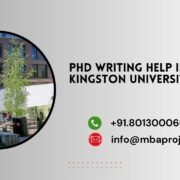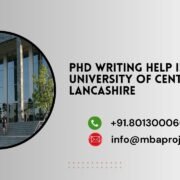PhD writing help in University of Vaasa
PhD writing help in University of Vaasa
PhD writing help in University of Vaasa. At the University of Vaasa, we understand that achieving a PhD is a rigorous yet rewarding journey. Our commitment to academic excellence and innovative research drives us to provide exceptional PhD writing help that equips scholars with the necessary skills and confidence to produce groundbreaking theses. In this article, we detail our comprehensive support system, state-of-the-art resources, and expert guidance designed to help PhD candidates excel in their academic endeavors.
Comprehensive Academic Support
We pride ourselves on offering a holistic approach to PhD writing help that addresses the multifaceted challenges faced by doctoral candidates. Our support is tailored to meet the unique needs of each student, ensuring that every aspect of their research is addressed with precision and professionalism.
Personalized Mentoring and Supervision
Our dedicated supervisors and academic mentors are at the heart of our PhD writing support. With extensive experience in research and publishing, they guide candidates through every stage of the writing process—from initial proposal development to final dissertation revisions. We provide one-on-one consultations, structured feedback sessions, and continuous monitoring to ensure that our students remain on track and are well-equipped to handle complex academic challenges.
Structured Writing Workshops
Recognizing the importance of effective communication in research, we offer a series of structured writing workshops designed to enhance academic writing skills. These workshops focus on:
-
Thesis structure and organization
-
Critical analysis and argument development
-
Effective literature review techniques
-
Data interpretation and presentation
Our interactive sessions foster a collaborative environment where students can exchange ideas, receive constructive feedback, and learn from seasoned academics.
Utilizing Advanced Technology
We incorporate cutting-edge software tools and digital platforms that streamline the writing process. Our students have access to advanced citation managers, plagiarism checkers, and collaborative writing tools that not only enhance the quality of their work but also ensure academic integrity. By integrating technology into our support system, we help candidates save time and focus on refining their research insights.
In-Depth Research Methodologies
A robust research methodology is the cornerstone of any successful PhD dissertation. At the University of Vaasa, we provide extensive training on various research methodologies, ensuring that candidates can select and apply the most suitable methods for their research questions.
Quantitative and Qualitative Research Integration
Our comprehensive support system includes specialized guidance on both quantitative and qualitative research techniques. We help students:
-
Design surveys and experiments that yield statistically significant results.
-
Conduct interviews and focus groups that uncover deep insights.
-
Integrate mixed methods to provide a more comprehensive view of their research problem.
This dual approach not only strengthens the validity of their findings but also broadens the scope of their academic contributions.
Data Analysis and Interpretation
Understanding complex data is crucial for formulating compelling arguments in a PhD dissertation. We offer expert advice on advanced data analysis techniques, including the use of statistical software and qualitative coding methods. Our specialists work closely with candidates to ensure that their data is accurately interpreted and effectively presented, thereby enhancing the overall impact of their research.
Developing a Scholarly Voice
One of the most challenging aspects of PhD writing is developing a distinctive and scholarly voice. We emphasize the importance of clarity, coherence, and originality in academic writing. Our approach is designed to help students articulate their ideas in a manner that resonates with the academic community and meets the highest standards of scholarly communication.
Crafting a Persuasive Argument
Our experienced academic writers provide detailed guidance on constructing persuasive arguments. We focus on:
-
Logical flow of ideas and seamless transitions between sections.
-
Critical evaluation of existing literature to position new research.
-
Balanced presentation of evidence to support claims.
By emphasizing these elements, we ensure that each dissertation not only contributes to academic discourse but also stands up to rigorous peer review.
Enhancing Academic Style and Tone
Our writing support includes personalized feedback on style and tone. We help candidates refine their writing to ensure it is formal, concise, and impactful. Through iterative revisions and targeted workshops, we assist students in transforming their drafts into polished, publication-ready manuscripts. This attention to detail is crucial in making a strong impression on dissertation committees and external examiners.
Navigating the Publishing Process
Beyond writing the dissertation, we provide extensive support in navigating the publishing process. Our goal is to help candidates disseminate their research findings through reputable academic journals and conferences.
Publication Strategy and Journal Selection
We guide students in developing a comprehensive publication strategy that includes:
-
Identifying target journals and conferences that align with their research focus.
-
Understanding submission guidelines and editorial policies.
-
Preparing cover letters and abstracts that effectively summarize their work.
Our expertise in academic publishing ensures that candidates are well-prepared to share their insights with the broader academic community.
Peer Review and Revision Assistance
The peer review process can be daunting, but our support extends beyond the initial submission. We offer critical revision assistance and help candidates address reviewer feedback in a constructive manner. Our aim is to ensure that every submission is robust, well-argued, and poised for acceptance in high-impact academic venues.
Building a Collaborative Academic Community
At the University of Vaasa, we foster a culture of collaboration and mutual support among PhD candidates. We believe that a vibrant academic community is essential for personal growth and scholarly success.
Interdisciplinary Research Groups
We encourage the formation of interdisciplinary research groups where students from diverse fields can collaborate and share insights. These groups facilitate cross-pollination of ideas, leading to innovative research projects that push the boundaries of traditional academic disciplines. By working together, candidates can leverage each other’s strengths and gain new perspectives on their research problems.
Networking Opportunities and Academic Conferences
We actively promote participation in academic conferences, seminars, and workshops. These events provide invaluable opportunities for students to network with leading scholars, exchange ideas, and stay updated on the latest research trends. Our institutional partnerships with academic organizations further enhance these networking opportunities, helping candidates build lasting professional relationships.
Ensuring Timely Progress and Accountability
Successful PhD writing requires meticulous planning and disciplined execution. Our support system is designed to keep candidates on schedule and ensure that every stage of their dissertation is completed on time.
Structured Milestones and Progress Tracking
We work with each student to develop a detailed timeline that outlines key milestones, such as proposal submission, literature review completion, data collection, and final writing. Our progress tracking system includes regular check-ins and detailed feedback sessions to ensure that deadlines are met and potential issues are promptly addressed. This structured approach minimizes delays and fosters a sense of accountability.
Stress Management and Work-Life Balance
Recognizing that the PhD journey can be stressful, we also provide resources for stress management and work-life balance. Our comprehensive support includes access to counseling services, time management workshops, and wellness programs. By promoting a healthy balance between academic work and personal well-being, we help candidates sustain their motivation and focus throughout the demanding process.
Exemplary Outcomes and Success Stories
The success of our PhD writing help program is reflected in the remarkable achievements of our graduates. Many of our former candidates have gone on to secure prestigious academic positions, publish influential research, and contribute significantly to their fields. Their accomplishments serve as a testament to the effectiveness of our comprehensive support system.
Case Studies and Testimonials
We proudly share numerous case studies and testimonials from candidates who have benefited from our PhD writing support. Their stories highlight not only the academic rigor of our program but also the personalized care and mentorship that have been pivotal in their success. These success stories inspire current and future candidates to pursue excellence and remain confident in their academic journey.
Commitment to Continuous Improvement
Our dedication to quality and excellence drives us to continually refine and enhance our support services. We regularly solicit feedback from students and incorporate their insights into our program improvements. This commitment to continuous improvement ensures that our PhD writing help remains at the forefront of academic support, adapting to new challenges and evolving research landscapes.
Conclusion
At the University of Vaasa, we are dedicated to providing unparalleled PhD writing help that empowers students to achieve their highest academic potential. Our comprehensive support system—encompassing personalized mentoring, advanced technological tools, detailed research methodology training, and robust publishing guidance—ensures that every candidate can navigate the complexities of their PhD journey with confidence and success. Our commitment to fostering a collaborative, innovative, and supportive academic community sets us apart as leaders in doctoral education.
Thank you for reading our Blog “PhD writing help in University of Vaasa”.
Also, read our more BLOG here.
For Order “MBA Projects” feel free to contact us at Mob: Call / WhatsApp: +91.8013000664 || Email: info@mbaprojects.net.in
#PhDWritingHelp, #UniversityOfVaasa, #AcademicSupport, #PhDAssistance, #DissertationHelp, #ThesisWriting, #ResearchHelp, #StudyInFinland, #VaasaUniversity, #PhDLife, #AcademicWriting , #PhDStudents, #PhDInFinland, #WritingSupport, #PhDResearch, #MastersAndPhD, #StudyAbroadSupport, #EduHelp, #PhDJourney, #FinishYourPhD, #PhDGoals, #FinlandEducation, #DoctoralWriting, #PhDServices, #VaasaLife














